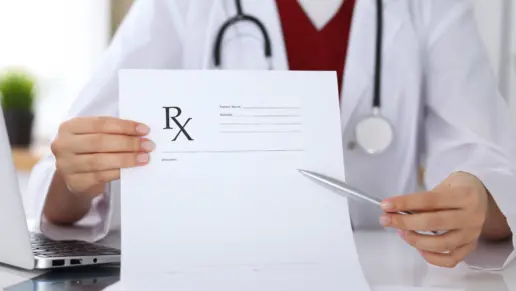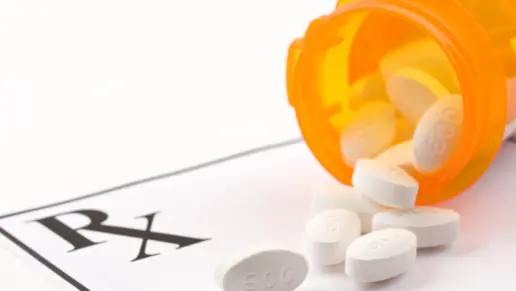What Is Gabapentin?
Gabapentin was granted FDA approval in 1993. It is commonly used to treat seizure disorders and some neuropathic pain disorders such as epilepsy, restless leg syndrome and postherpetic and diabetic neuropathy.
More recently, gabapentin uses have expanded. Now, it’s also used as an alternative to opioid medications for pain and to lessen the withdrawal symptoms of alcohol and cocaine addiction.
Additionally, gabapentin is prescribed off-label to treat conditions like fibromyalgia, bipolar disorder, anxiety disorders, mood disorders, irritable bowel syndrome, migraine prophylaxis, post traumatic stress disorder (PTSD), refractory chronic cough and postmenopausal vasomotor symptoms.
Early on, physicians widely prescribed gabapentin as a safer alternative to opioid medications due to the misconception that it was not addictive. However, studies have shown that gabapentin abuse is becoming more common especially among people who have an addiction to opioids or other drugs.
In addition to potential addiction, gabapentin is associated with an increased risk of suicidal ideation, mood swings and sudden significant changes in behavior.
The Drug and Enforcement Administration (DEA) reported that prescriptions of gabapentin doubled from 2011 to 2017 and it was in the top 10 of the most prescribed medications in 2021. By 2018, nearly one in five adult patients with chronic pain were prescribed gabapentin.
On the street, you may hear gabapentin called “Gabbies” or “Johnnies.” What does gabapentin do? Individuals may abuse gabapentin for its ability to produce feelings of relaxation or calmness. They may take it at high doses (above 800 mg or more) for its ability to produce euphoria. Gabapentin is also used recreationally because it does not show up on most standard drug screens.
Gabapentin Abuse
The rate of gabapentin addiction is relatively low in the general population at 1.1%. However, one study found that the number is around 22 percent among individuals in drug treatment. Often, individuals who abuse gabapentin do so because it potentiates the effects of other drugs.
Signs of a Gabapentin Addiction
Is gabapentin addictive? Its use can lead to dependency and withdrawal symptoms. Occasionally people develop an addiction to gabapentin.
The signs of gabapentin addiction vary but may include lying or exaggerating symptoms to doctors, using multiple doctors to get more doses, switching providers when they are no longer willing to prescribe the medication and changes in personal habits. A person may also refuse to quit despite a negative impact on their life in terms of relationships, finances or legal trouble.
Individuals may exhibit drowsiness, coordination problems, tremors, sleep disturbance, changes in mood, forgetfulness, difficulty speaking, increased anxiety, depression and suicidal ideation.
Combining Gabapentin with Other Drugs
Using gabapentin with other central nervous system depressants such as opioids, antidepressants and benzodiazepines has been linked to respiratory depression. The FDA issued a warning about the medication in 2019 due to this concern. In the warning, the agency discussed the potential risk of using these medications together due to the risk of overdose death.
Frequently, individuals will abuse this medication in combination with other drugs to potentiate the gabapentin side effects and increase the “high feeling” or euphoria. The combination of these drugs can cause breathing difficulties for people with respiratory disorders such as asthma or COPD as well as the older population.
Can You Overdose on Gabapentin?
Gabapentin overdoses are possible. This can occur accidentally or if the drug is abused. In 2022 the CDC issued a report that indicated overdose deaths related to gabapentin use nearly doubled from 2019 to 2022.
Used alone and in accordance with a doctor’s prescription, gabapentin is relatively benign. Yet when combined with other drugs the risk of overdose increases. Unfortunately there is no antidote to prevent gabapentin overdoses unlike opioid drugs such as fentanyl and heroin.
How Do I Know If Someone Has a Gabapentin Addiction?
Signs of a gabapentin addiction differ from person to person. This usually includes changes in behaviors such as poor decision-making, drastic mood swings, changes in sleep patterns, committing crimes such as stealing or forging prescriptions to obtain the drug, excessive drowsiness or energy and difficulty with individual, family and work relationships.
Also, people who are seeking the drug may use multiple providers to obtain their prescriptions or lie to providers to get increased doses or additional medication.
Where Can I Find Information About Gabapentin Abuse Treatment?
Recovery begins with acknowledging there is a problem and being willing to change. The next step is locating the treatment program that is right for you. Gabapentin withdrawal can be dangerous. It requires close medical supervision and support. Medical detox is often required to safely navigate this process.
The U.S. government has resources to help you locate treatment centers and programs to meet your needs. Many people begin by reaching out to the Substance Abuse and Mental Health Services Administration (SAMHSA). The SAMHSA website is a great starting point.
Your medical provider is another resource that can help find the appropriate treatment programs. They can assist you with assessments and also give referrals if needed. At times, prior authorization is needed before insurance providers will cover treatment costs. They can assist you with navigating this process.
Local support groups such as Alcoholics Anonymous (AA) or Narcotics Anonymous (NA) can help you locate treatment centers in your area and may also include members who have experience in recovery from gabapentin addiction. Finally, online resources such as our treatment finder tool at Rehab.com can help you locate facilities that specialize in gabapentin addiction.
What Are Treatment Options for Addiction to Gabapentin Addiction?
Treatment options for addiction to gabapentin should begin with medically assisted detox. Medical detox ensures close medical supervision to monitor for and support withdrawal symptoms that include anxiety, pain, nausea, tremors, fatigue and restlessness.
These may start as soon as 12 hours after the last dose and take as long as 18 weeks to manage symptoms. In some cases, individuals may exhibit changes in blood pressure, heart palpitations and seizures.
Once an individual completes the medical detox process their treatment team can help to determine the proper level of care needed to start the recovery process. Levels of care range from the most intensive programs including residential or inpatient to aftercare programs.
During inpatient care individuals reside at the hospital or treatment facility and participate in individual and group therapies that include a variety of treatment modalities, usually for 28 to 30 days. Inpatient treatment is recommended for individuals with moderate to severe addiction who require 24/7 supervision and have a high concern for relapse.
Outpatient programs offer comprehensive care with flexibility. Individuals may participate in intensive treatment programs such as partial hospitalization programs (PHP) or intensive outpatient programs (IOP) which offer sessions several times each week incorporating individual and group therapy.
These types of treatment programs are good for people who need flexibility due to family or work responsibilities and do not require around the clock care.
Once an individual completes intensive treatment they may benefit from an aftercare program that helps them on their recovery journey. Aftercare provides individuals with relapse prevention support and is a great resource for developing positive coping skills and finding peer engagement.
Featured Facilities Near You
Finding facilities near you…




